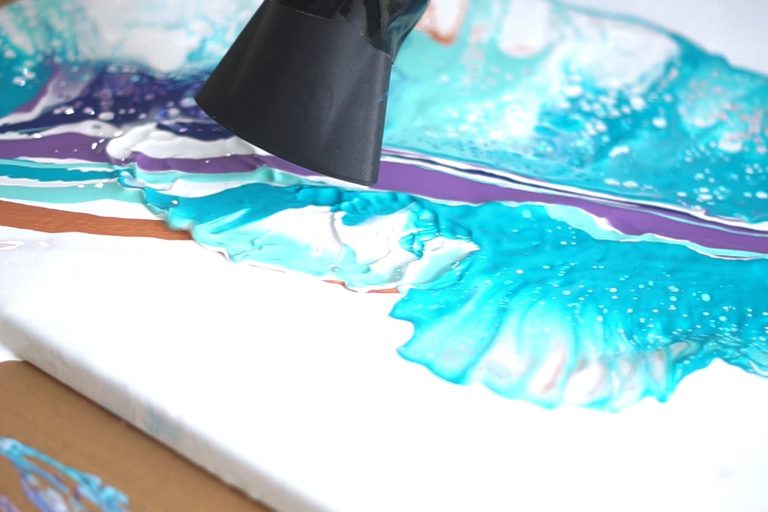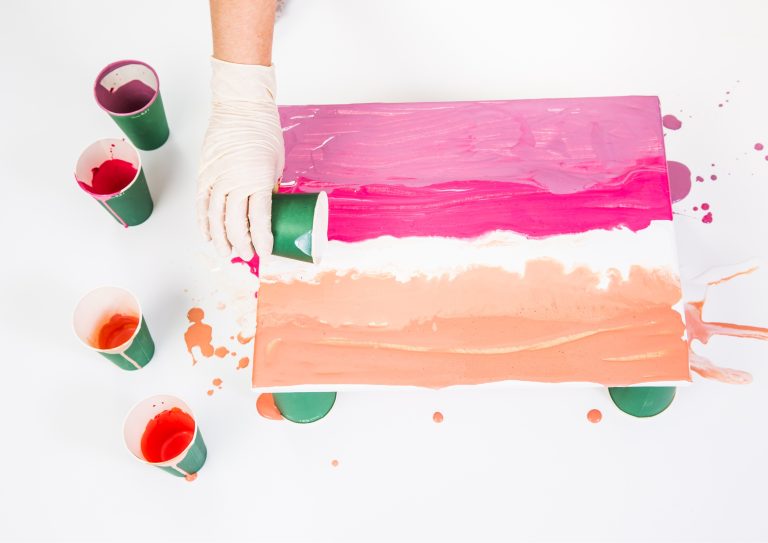What Can I Use Instead of Silicone in Acrylic Pouring?
Silicone is a popular additive for acrylic pouring because it’s relatively cheap, and creates a lot of cells in your paintings.
However, there are debates in the pouring community about the disadvantages of using silicone. Why? Because of concerns for potential health risks in using silicone, and how it affects the quality of the paint.
There are large art organizations who don’t recommend silicone in acrylic pouring because it can degrade the artwork’s archival quality. (Lifespan of the art)
However many artists use a range of different products to create cells, from skincare oils to premixes there are many different additives you can use instead of silicone oil.
[TS_Poll id=”1″]

So let’s unpack it! In this article, we will explore the best silicone alternatives you can use in your acrylic pouring paintings.
We’ll also give you a full explanation of why some people don’t use silicone oil, so you can decide if it is right for you.
Let’s begin, you can jump ahead to any sections you want answered below:
- The Best Substitutes For Silicone Oil
- How oils interact with paint to create cells
- Silicone Oil Chemical Properties and Process
- The Problem With Using Just Water
- Why Does Silicone Reduce the Archival Quality of an Artwork?
- Problems With Silicone Oil as a Pouring Medium
- Other Pouring Mediums
- Acrylic Pour Painting Sealants
- Frequently Asked Questions
The Best Substitutes For Silicone Oil
Here are some of the best silicone alternatives that you can use in your pour paintings. Please remember, silicone oil is simply an additive, if you are using it, you should only be adding a few drops to a ready prepared acrylic pouring mix.
We share our personal favourite pouring medium below too!

1) Mixing Pouring Medium with Acrylic Paint
The best option:
Just use no oil additive at all. Just use pouring medium, acrylic paint and a dash of water.
Silicone oil is not essential in acrylic pouring. You can actually create beautiful cells and other effects without using it.
How? Simply mix a pouring medium (such as floetrol, liquitex etc) with acrylic paint and add a dash of water. Common ratio is 50% pouring medium, 50% paint (or less paint if its too thick) and a dash of water.

Benefits to this is, its less expensive and advertised as non toxic… Plus the long term quality of your artwork won’t be affected.
What is our favourite pouring medium to use? Floetrol from the hardware store. It’s readily available, used in construction of houses so you know it’s decent quality and it works great creating plenty of cells in pouring art.
2) Premixed Acrylic Flow Paints
There are plenty of acrylic paint products which are made ready to pour, on the market. They have been specifically designed to flow easily and create stunning effects.
One of the benefits of using premixed acrylic pouring paint is that it won’t degrade over time as silicone can. Plus, it’s advertised as being non-toxic and safe to use, which is always a bonus.
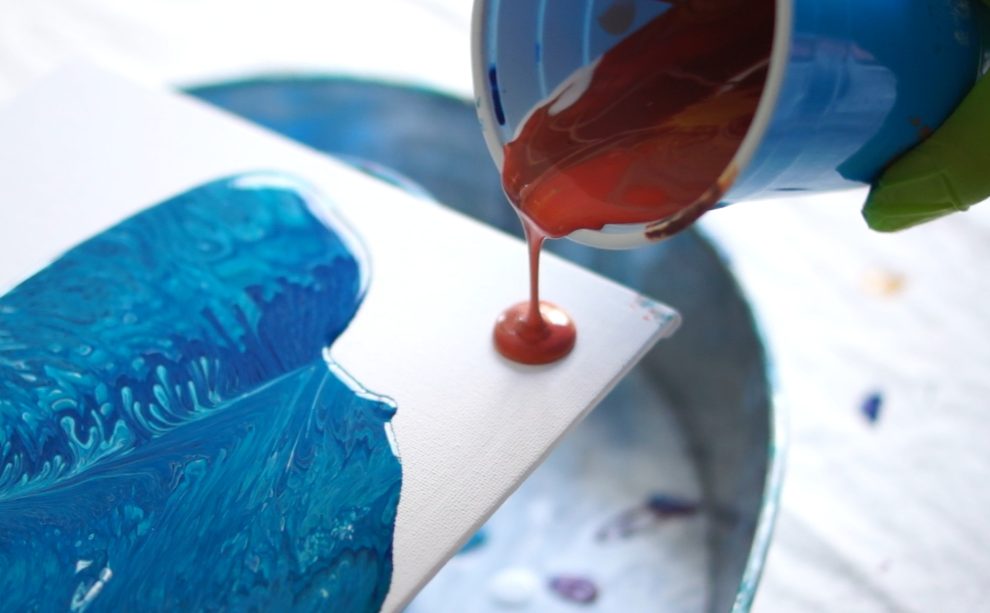
3) Fluid Acrylic Colour
Fluid acrylic colour products are a great alternative to silicone oil, and they can create awesome cells. They come in little paint bottles of all different colours, they are a thinner consistency so they flow easily and mix well with other colours, so you can create all kinds of artworks at home using them.
Typically you won’t get many cells using these products but the effects are still beautiful and very fun!
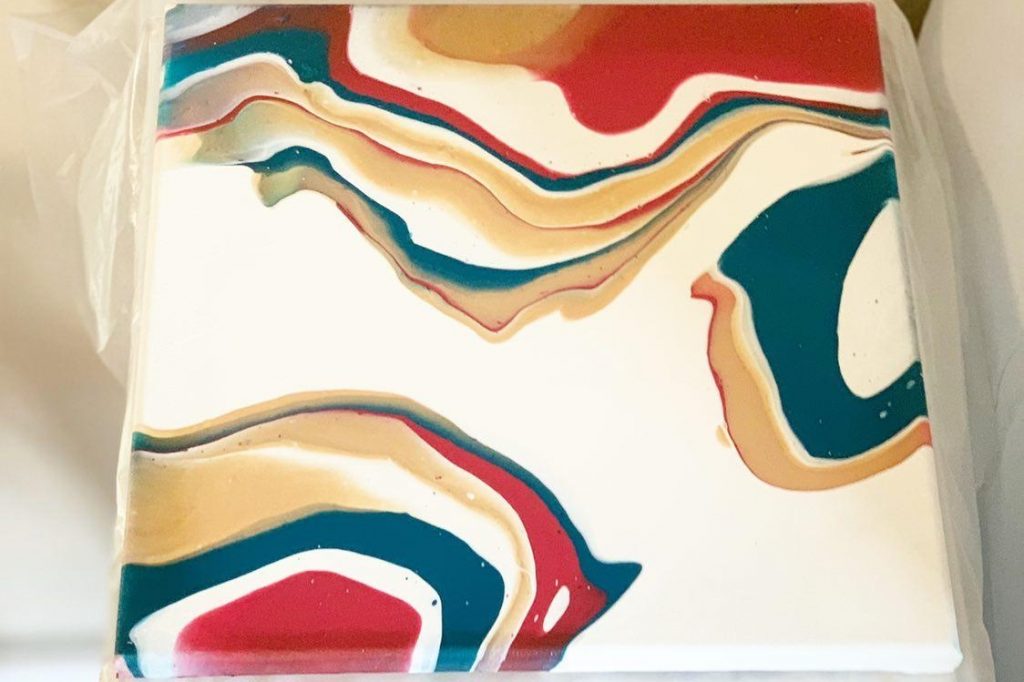
4) Dimethicone
Dimethicone is actually a type of silicone. It’s a silicone-based compound commonly used in skincare products and cosmetics.
This is very easy to use and similarly effective to silicone oil in creating cells in your paintings.
The only downside of using dimethicone is that it can be a bit pricey and still has some potentially toxic ingredients in it (even though it is literally in hair and skin care products…). However, a little goes a long way, so a small bottle will last you a long time.
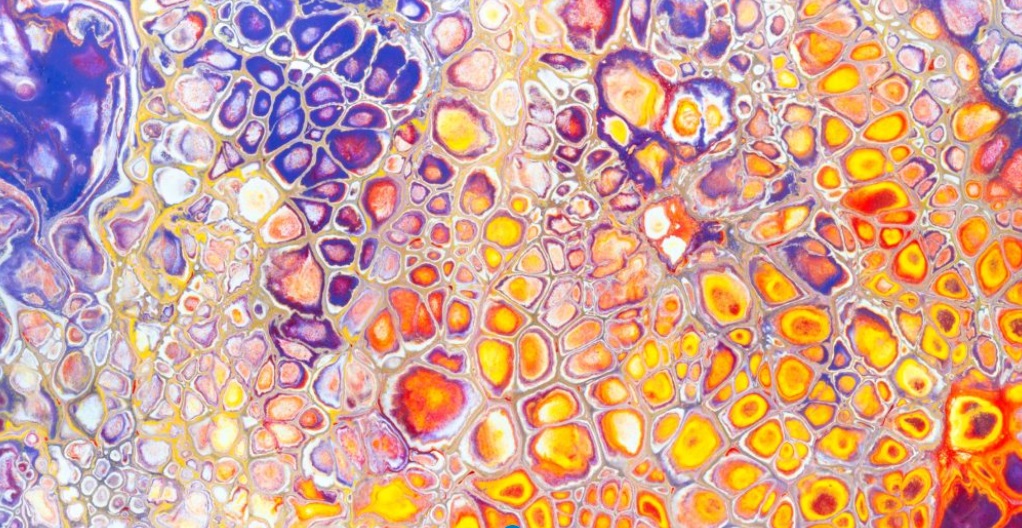
5) Treadmill Belt Lubricant
Another option is treadmill belt lubricant. This can be found at most sporting goods stores and is an alternative to silicone. However, it is made of 100% silicone. So it’s just an alternative product really for the same thing, so still be careful when using it also it can reduce the long term quality of your artwork.
Simply add 1 -2 drops of the lubricant to your paint and mix it well.
7) Isopropyl Alcohol
Isopropyl alcohol is another alternative to using silicone oil. It’s easy to find and relatively inexpensive, and can work for creating cells but it isn’t as effective as silicone oil.
Some people simply buy rubbing alcohol from the pharmacy and spray it onto their artwork. Spraying will create a spritz of cells on your artwork.
When adding it to your acrylic paint mix, simply add a small amount of isopropyl alcohol to your paint and mix it well.
Be minimal with usage, too much alcohol can make the paint too runny, have problems drying and interact with the canvas.
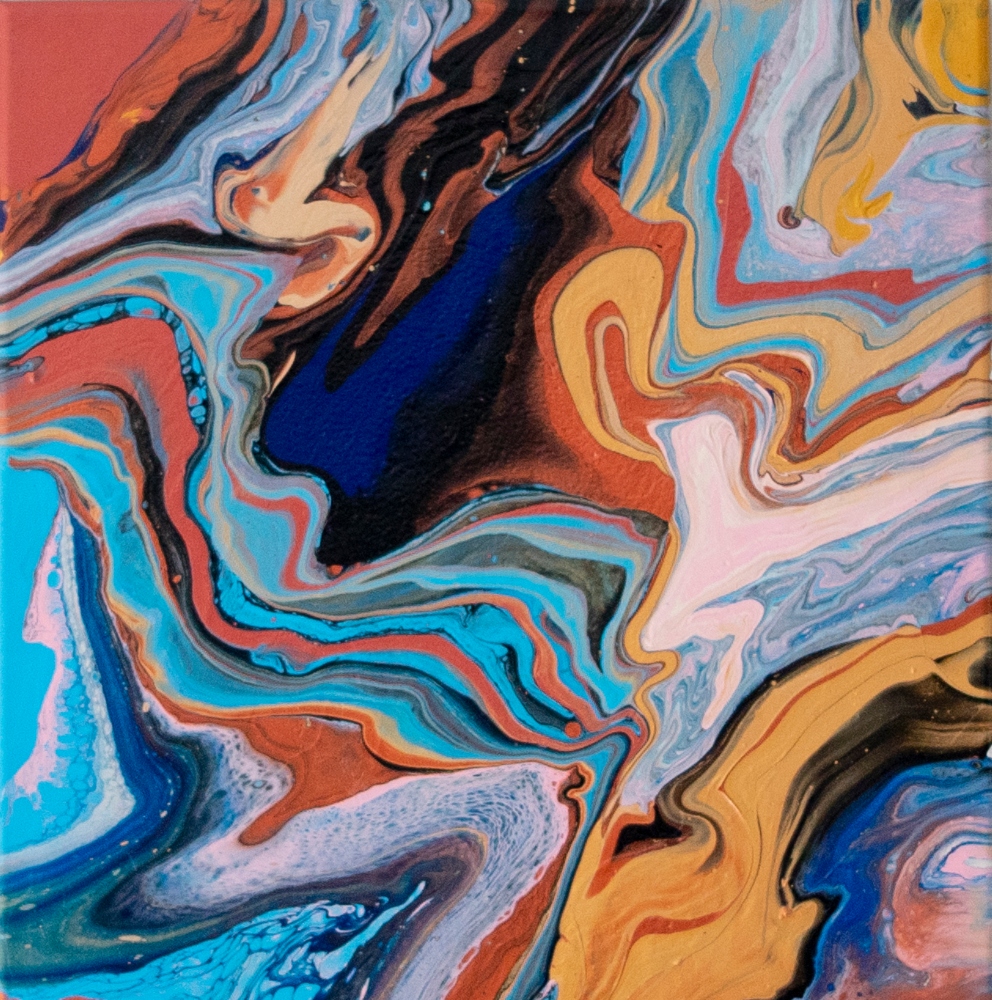
8) Olive Oil
Olive oil is a controversial medium in the pouring community. It is said to make a mess and not be a very good option. However, we are mentioning it in case you are desperate, its also the most eco-friendly and natural alternative to using silicone oil. It’s also easy to find and can potentially work at making some cells.
Only use a tiny bit, don’t mix it in too much. Be sure to test it on a scrap piece of paper before using it on your painting, as too much oil can be a problem.
Some artists have mentioned trying out using coconut oil, almond oil or jojoba oil in their paintings too. Let us know if you try this. We may have to try! Remember only a few drops.
9) WD-40 Multi Purpose Lubricant
WD-40 multi purpose lubricant is spray on petroleum oil. (Sounds pretty toxic to me so be careful!)
Quite a few people use this when they can’t find silicone oil in a bottle for art purposes. This can be hazardous for health. Read the safety data sheet if using for art purposes.

10) RainX product
RainX product is designed to propel water away from other compounds. It is used for glass, to keep water off it. Some artists say this product works similar to silicone. We haven’t tried it, but let us know if this is true!
How oils interact with paint to create cells
Basically, silicone oil is a different composition to paint. Paint is water based, silicone is oil based. The two interact and separate creating cells in acrylic pouring art.
On a molecular level, water is more dense than oil.
The molecules which make up water are smaller and heavier. In oil molecules are longer and made up of carbon.
Water has oxygen molecules and is attracted to similar molecules. Because oil is made up of carbon, water molecules aren’t attracted to the oil molecules which is why they separate making cells.

This is why oils are such a good additive for cell creation.
However, people argue whether natural oils can compete with a commercial grade oil like silicone. 100% silicone oil is the preferred oil for use in acrylic pouring art.
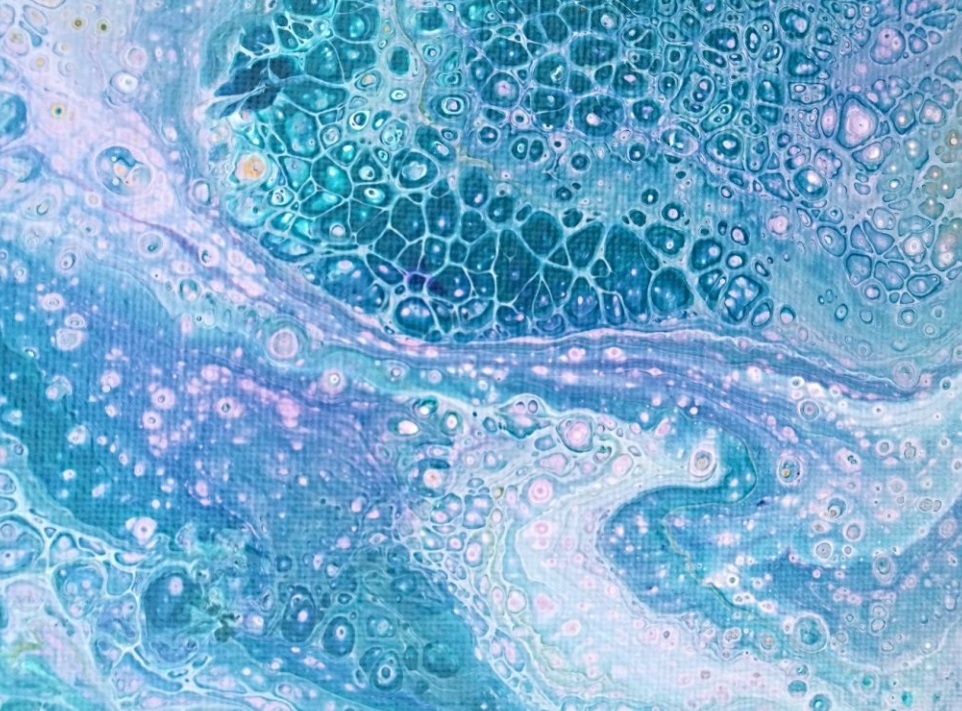
Silicone Oil Chemical Properties and Process
Silicone oil is a clear, odourless, and viscous liquid. It is insoluble in water but soluble in most organic solvents. Silicone oil is used as a lubricant, sealant, and waterproofing agent.
It is also used as an antifoaming agent and in cosmetics, where it can act as a conditioner, emollient, and skin protectant.
The main difference between silicone oil and other oils is its chemical structure. Silicone oil is made up of repeating units of siloxane, which is a silicon-oxygen bond. This makes silicone oil very stable and gives it a high boiling point.
The main reason silicone is not a recommendable pouring medium is that it does not vaporize and can cause film formation issues.
This chemical reaction can cause the formation of a yellowish film on the surface of your painting. In severe cases, it can also cause the paint to peel off.
The Problem with Water as a Pouring Medium
Water is the most commonly used liquid for acrylic pouring. It is cheap and easy to find and works well for many types of paintings. However, water has some drawbacks that make it less than ideal for use in acrylic pouring.
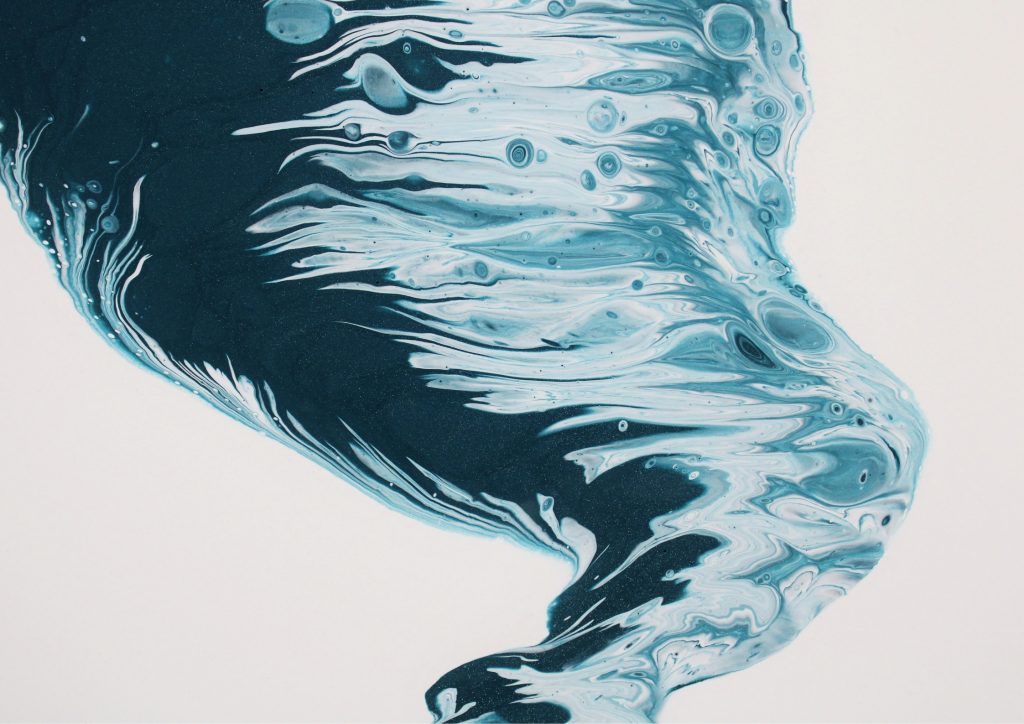
Water can cause the paint to become runny, making it difficult to control the flow of the colour. If too much is used it may not dry well, and can even appear transparent because it dilutes the pigment in the paint too much.
A good recipe for acrylic pouring includes the added water amount should not be more than 10% of the total paint.
Also, another tip is to start with less water than you expect that you need.
For example, if you are using 100 ml of paint, start with 10 ml of water mix. But remember, you can always add more paint to thicken the mixture or more water to loosen up the mix.

Water also dries quickly, which can cause the paint to become hard to work with. If you’re using water as your medium, be sure to work quickly and have all of your supplies ready before you start painting.
Finally, water can cause the paint to lose its colour. When water dries, it evaporates, taking the pigment with it. This can leave your painting looking dull and washed out.
Why Does Silicone Reduce the Archival Quality of an Artwork?
The archival quality of an artwork is determined by how well it will resist deterioration over time.
Many factors can affect the archival quality of a painting, including the materials used, the conditions under which it was created, and how it is stored.
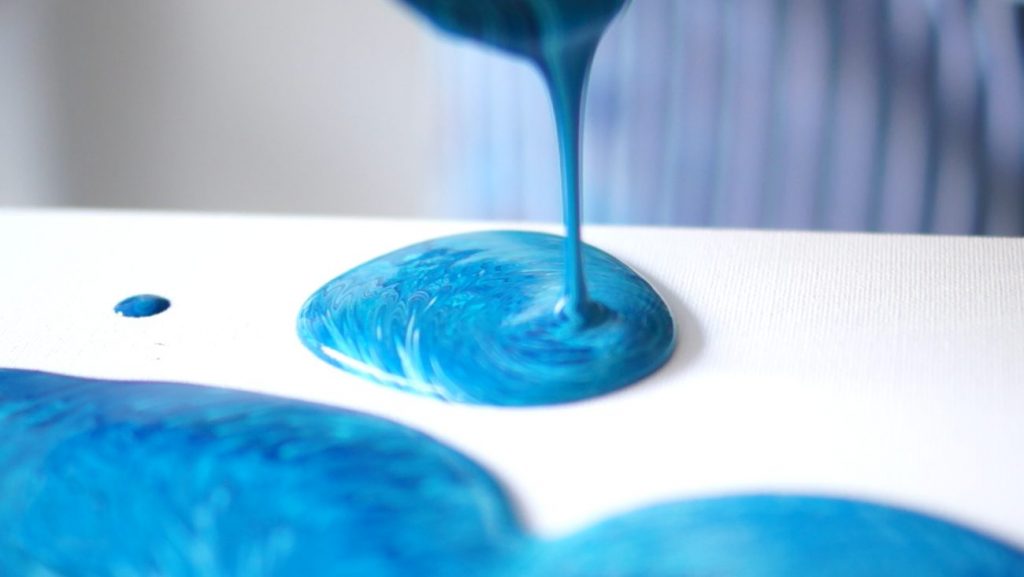
One factor that can reduce the archival quality of an artwork is the use of silicone oil. Because silicone oil does not evaporate, it can form a barrier on the surface of the painting that prevents oxygen and moisture from reaching the paint. This can lead to the paint drying out, cracking, and flaking off.
Silicone oil can also interact with the pigments in the paint, causing them to fade or change colour. This can happen over time or even immediately after the painting is completed.
Due to oxidation, artworks with silicone oil in them can also yellow over time.
For these reasons, it is important to take care when using silicone oil in your paintings. Only use it if absolutely necessary, and be sure to remove any excess oil from the surface of the painting before storing it. Most people use a paper towel with a tiny bit of a dishwashing liquid water mix applied to it, to remove a silicone oil film.
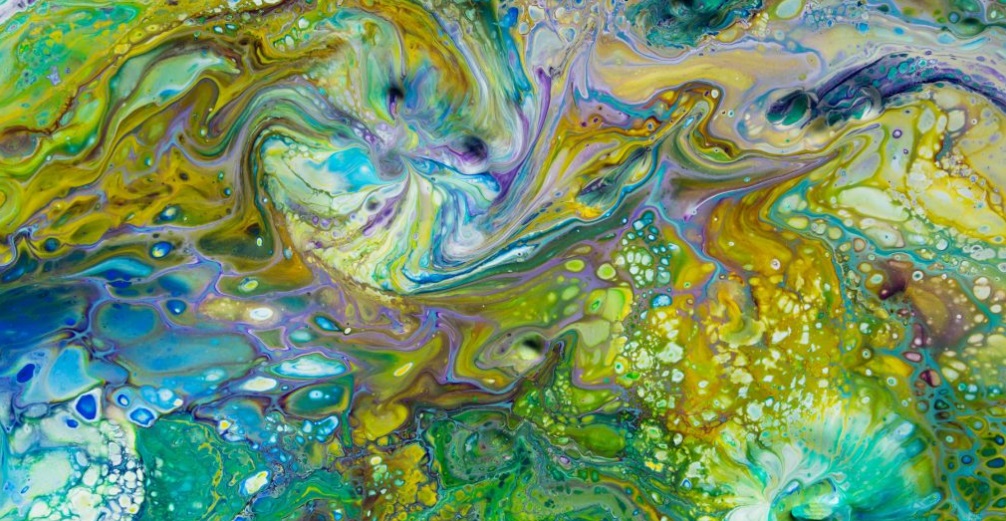
The Problem With Using Silicone Oil As A Pouring Medium
The issue of silicone oil not vaporizing leaves a risk for film formation on surfaces that can damage an artwork’s archival properties.
Additionally, because silicone oil is insoluble in water, it can be challenging to clean up and remove from surfaces and materials.


Another issue about silicone is its density. The density of the oil can sometimes be an issue when mixing with other pouring mediums and can cause the paint to separate.
As a result, it is important to be aware of these potential problems when using silicone oil as a pouring medium and take steps to avoid them.
Other Pouring Mediums and Additives
Aside from paint conditioners, water and silicone oil, other liquids can be used as a pouring medium or additive for acrylic pouring. Some of these include:
- Alcohol: Alcohol is a popular choice for many artists because it evaporates quickly and does not cause the paint to become runny. However, it can cause the colour of the paint to fade and should be used sparingly.
- Golden Open Acrylics: Golden Open Acrylics are a type of paint designed to stay wet for longer periods. This makes them ideal for use in acrylic pouring. However, they are more expensive than regular acrylic paint and can be difficult to find.
- Floetrol: Floetrol is a liquid additive that is designed to help the paint flow more smoothly. It can be added to any type of paint and is available at most hardware stores.

- PVA Glue: PVA glue is a common household product that can be used as a pouring medium. It is cheap and easy to find, but it can make the paint difficult to work with and can cause the colour to fade.
- Liquitex Gloss: This is a pouring medium that is specifically designed for use with acrylic paint. It is available at most art supply stores and helps to create a high-gloss finish.
- Rainx for cells: Rain-X is a product that is designed to repel water from surfaces. It can be added to your pouring medium to help create cells in your painting. Simply add a small amount of Rain-X to your pouring medium and mix it well. Then, pour your paint onto a surface and watch as the Rain-X creates beautiful cells in your painting.
Each of these liquids has its own advantages and disadvantages, so it is important to choose the one that is right for you. Experiment with different types of pouring mediums to see which one gives you the best results.
Acrylic Pour Painting Sealants
Once your painting is fully dry, epoxy resins or other sealants can be added to your painting to help to preserve it. This will protect your painting from moisture and other environmental factors that can damage it.
You can easily apply a coat of varnish to your painting using a brush. Simply apply the varnish to the surface of your painting and allow it to dry. Once it is dry, your painting will be protected from the elements and will last many years.
Frequently Asked Questions
What can you use to make cells in acrylic pouring?
The most common way to create cells in acrylic pouring is to use silicone oil. However, silicone oil has some drawbacks, including the fact that it does not evaporate and can cause the film to form on surfaces.
What can you use instead of silicone?
Several alternatives to silicone include acrylic pouring paint, latex paint conditioner, alcohol etc. Each of these options has its own advantages and disadvantages, so be sure to experiment to find the one that works best for you.
Can you use olive oil for acrylic pouring?
Olive oil can be used for acrylic pouring but is not as effective as silicone oil. Some people have claimed it is a mess and doesn’t work. The oil can also leave a residue on the surface of the painting.
How to create cells in your acrylic pouring painting?
There are several ways to create cells in your acrylic pouring painting. The most efficient way is to use silicone oil or the alternatives.
To create cells, use toothpicks, dip the silicone oil’s edge, and swirl it around your painting. You can also use a straw to blow the cells.


